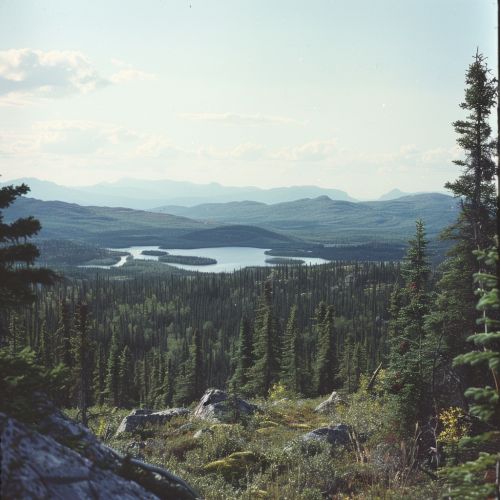Canada
Geography
Canada, the second-largest country by total area, is located in the northern part of North America. Its southern border with the United States, stretching 8,891 kilometers, is the world's longest bi-national land border. Canada's landscape encompasses a variety of regions, including vast forests, prairie grasslands, and extensive coastlines along the Atlantic and Pacific Oceans. The country's geography is dominated by its size and the topographical features of the Canadian Shieldmore, a geological region covering more than half of Canada, characterized by exposed Precambrian igneous and high-grade metamorphic rocks.


History
The history of Canada covers the period from the arrival of Paleo-Indians thousands of years ago to the present day. Prior to European colonization, the lands encompassing present-day Canada were inhabited for millennia by Indigenous peoples, with distinct trade networks, spiritual beliefs, and styles of social organization. Some of these older civilizations had long faded by the time of the first European arrivals and have been discovered through archaeological investigations.
Politics
Canada is a federal parliamentary democracy and a constitutional monarchy, meaning the country recognizes a monarch as the official head of state, but the monarch's role is mostly ceremonial. The executive powers in the country are vested in the monarch, but they are generally exercised by the Governor General on the advice of the Prime Minister or other government ministers. The political structure of Canada is complex and multifaceted, with a system that includes elements of both British and American political systems.
Economy
The economy of Canada is highly developed and diverse, with a high standard of living and strong levels of economic freedom. It is the 10th largest GDP by nominal and 16th largest GDP by PPP in the world. As with other developed nations, the country's economy is dominated by the service industry, which employs about three quarters of Canadians. Canada has a mixed economy, ranking above the US and most western European nations on The Heritage Foundation's index of economic freedom.
Culture
Canadian culture is primarily a Western culture, with influences by First Nations and other cultures. It is a product of its ethnic diversity, history and geography. Canada's culture draws influences from its broad range of constituent nationalities, and policies that promote a just society are constitutionally protected. Canadian Government policies such as publicly funded health care, higher taxation to redistribute wealth, the outlawing of capital punishment, strong efforts to eliminate poverty, strict gun control, and the legalization of same-sex marriage are social indicators of Canada's political and cultural values.
